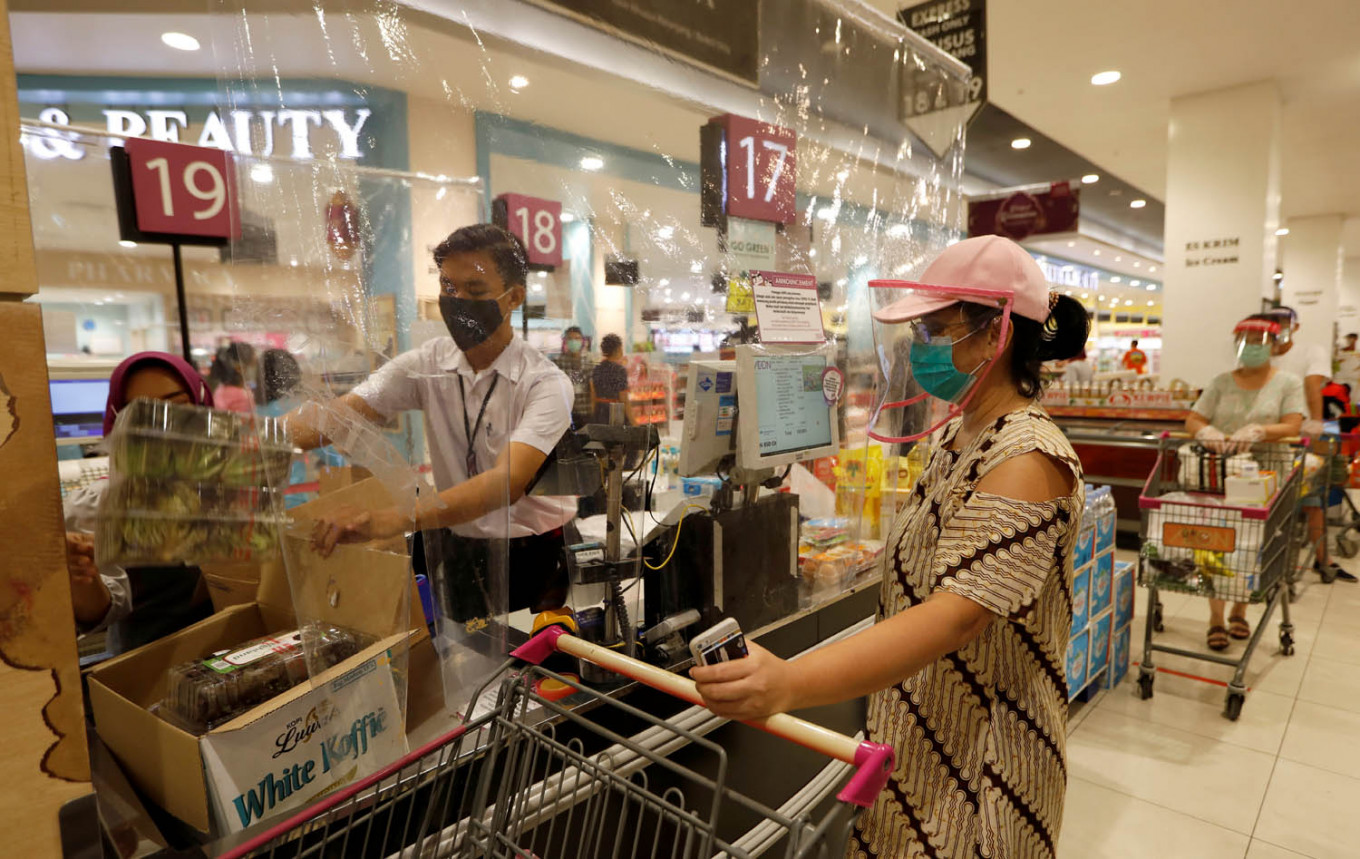Tangerang, Depok, Bekasi at highest COVID-19 risk in Greater Jakarta: Task force
Jakarta has seen a 17.6 percent decline in new cases on a weekly basis. However, the province could experience a second wave as Idul Fitri mudik (exodus) travelers return to the capital.
Change Size
 A woman wearing a mask shops at a supermarket in Tangerang on May 26. COVID-19 task force head of expert staff Wiku Adisasmito has said that Tangerang city, Depok city, Bekasi city and Bekasi regency have the highest risk of COVID-19 transmission in Greater Jakarta. (Reuters/Willy Kurniawan)
A woman wearing a mask shops at a supermarket in Tangerang on May 26. COVID-19 task force head of expert staff Wiku Adisasmito has said that Tangerang city, Depok city, Bekasi city and Bekasi regency have the highest risk of COVID-19 transmission in Greater Jakarta. (Reuters/Willy Kurniawan)
C
OVID-19 task force head of expert staff Wiku Adisasmito has said that Tangerang city, Depok city, Bekasi city and Bekasi regency have the highest risk of COVID-19 transmission in Greater Jakarta based on a recent increase in cases.
"We’ve made a map of the risk of COVID-19 transmission based on public health criteria by the WHO,” Wiku said in an online press conference on Tuesday.
“In Greater Jakarta, we can see that there are areas that have moderate risk and high risk. The areas that have high risk are Tangerang city, Depok city, Bekasi city and Bekasi regency," he added.
Wiku said that according to the map, Jakarta was at moderate risk because the province had shown a 17.6 percent decline in weekly new cases.
Read also: Jokowi visits mall in Bekasi ahead of reopening with ‘new normal’ protocols
"However, when people who participated in mudik [exodus] return to Jakarta, the capital could see a second wave," he added.
Wiku said the mapping was based on epidemiology, the health system and public health surveillance.
"The epidemiology indicator consisted of transmission rates, fatality rates, the number of patients under surveillance [PDP] and people under monitoring [ODP]," he said.
The health system indicator is measured by the hospital facilities, the availability of beds and the quantity of personal protective equipment (PPE) for healthcare workers.
Read also: Concerns mount over reopening of offices, malls as Indonesia steps into 'new normal'
Public health surveillance refers to the local health system’s ability to test, monitor and trace the contacts of residents.
Wiku said the COVID-19 task force had mapped the risk of COVID-19 transmission in all affected regions of the country on a mobile application called Bersatu Lawan Covid (BLC), which is accessible to the public.
"The WHO advises every country to map the transmission risk based on public health criteria to determine whether a region is ready to resume normal social and economic activity. [...] It can also be used as a guideline for each region to determine whether they need to implement or loosen large-scale social restrictions [PSBB]," he said. (nal)









